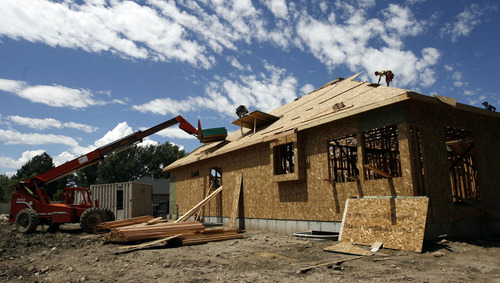This is an archived article that was published on sltrib.com in 2014, and information in the article may be outdated. It is provided only for personal research purposes and may not be reprinted.
If Utah is going to continue to lead the nation in baby-making, there is only one thing that will save us: smart growth.
So it is both disappointing and challenging to see a new study showing that Utah has the second-fastest growth of urban sprawl in the nation. The NumbersUSA Education and Research Foundation cited U.S. Census and National Resource Conservation Service data to show that the amount of developed land covered by urban areas grew by 17.6 percent from 2002 to 2010. Only Nevada's 18.7 percent was higher.
Utah is predisposed to lead the sprawl list because of its propensity for early marriages and large families. While there is good debate about what the optimum "replenishment" birthrate is for any population, it's a given that Utah will more than meet that rate in the coming years. Utah's in-migration rate contributes, but it's the birthrate that dominates our future.
And that future will present truly massive challenges. We're talking about almost doubling the population of the state by 2050, and the vast majority of that growth will be in the valleys along the Wasatch Front. Those valleys are already running out of breathable air, and drinkable water will be stretched if the climate becomes drier as expected. Like sprawl, we trail only Nevada in per capita water consumption.
In such a world of finite resources, sprawl is a nostalgic conceit. The 20th Century ideal of quarter-acre lots, green lawns, two-car garages and curving subdivisions is not sustainable.
What's more, it may not even be that enjoyable. Another recent study, this one coming from the University of Utah's Metropolitan Research Center, found that people who live in compact, connected urban areas — anti-sprawl — are healthier, more mobile and enjoy lower costs of living. They spend less on transportation and housing, and they enjoy the cultural amenities of walkable neighborhoods.
The modern sprawled metropolis is, by contrast, a horizon of cocoons where people rarely even walk around their own neighborhoods because it's too far to a grocery store, cafe or train stop.
High-density development is finally finding favor in the suburbs, and the development of transit infrastructure has been a terrific stimulant. Projects near rail stops are among the most progressive in embracing not just tighter housing but also retail and offices. It's time to fight the spread and create real communities for those generations to come.



